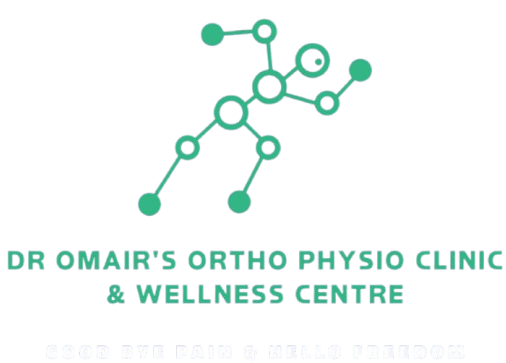Meniscus tears can be a real pain. These injuries affect the knees, often making simple activities like walking and bending quite difficult. They can impact everyday life by causing swelling, discomfort, and limited movement. Traditionally, doctors recommend resting, applying ice, and sometimes even surgery to treat meniscus tears. With advancements in treatment, physiotherapy for meniscus tear is now recognized for accelerating healing and offering a quicker return to normal life. This approach focuses on targeted exercises to rebuild strength and mobility in the knee. As we’ll see, the importance of physiotherapy in meniscus injury recovery is undeniable, offering notable benefits over older treatments.
Understanding Meniscus Tears
A meniscus tear is damage to the cartilage in your knee. It’s usually caused by sudden twists or changes in direction, often during sports. But you don’t have to be a professional athlete to suffer from a meniscus tear. It can happen to anyone, even during regular activities like standing up suddenly or walking on uneven ground.
Common symptoms of a meniscus tear include feeling a “pop” in the knee, swelling over time, and pain in the joint. You might also notice that your knee feels a bit unstable or locks at certain angles. These symptoms can make it hard to get through day-to-day tasks without discomfort.
A New Perspective: The Importance of Physiotherapy in Meniscus Injury Recovery
Recovering from a meniscus tear doesn’t have to be a lengthy process. Physiotherapy for meniscus tear offers an effective way to heal. This approach is scientific, focusing on rebuilding and strengthening the knee. Through a series of exercises, physiotherapy can help restore your range of motion while reducing pain.
Several key techniques are involved in physiotherapy for healing meniscus tears. These include targeted exercises to stretch and strengthen the muscles around your knee. Muscle-toning helps in giving better support to the joints. Also, physiotherapy may use gentle massage and movement to improve blood flow and reduce swelling. All these methods not only speed up healing but also improve your overall knee health. They ensure that you’re not just getting back to normal but also reducing the risk of future injuries.
Role of Physiotherapy in Pain Management and Enhanced Mobility Recovery
One of the biggest benefits of physiotherapy for meniscus tear is pain relief. By targeting the root cause of pain, physiotherapy can help alleviate discomfort effectively without relying heavily on medications. Techniques like joint mobilization increase flexibility and ease pain by enhancing blood flow around the joints.
Physiotherapy also improves mobility. After a meniscus tear, stiffness can set in. Regular physiotherapy exercises can loosen up the tight spots. These exercises help the muscles strengthen and gain flexibility, leading to better joint mobility. This enables you to move with more confidence, without the fear of your knee giving way.
Economic and Time Advantages of Physiotherapy Over Surgery
Choosing physiotherapy for meniscus tear over surgery can save money. Surgeries are often expensive and involve many additional costs like medications or follow-up visits. Physiotherapy typically costs less in comparison and offers great results.
Time is another factor. Surgeries usually require significant recovery time. However, with physiotherapy, recovery often means fewer days in rest and more active time. This means you can go back to your regular routine quicker, without a long downtime. For many, the choice of physiotherapy is not just about the outcome but also about returning to normal life without delay.
Understanding the Role of Knee Arthroscopy
Knee arthroscopy is a common procedure touted to fix meniscus tears. This surgery involves using a camera attached to instruments inserted into the knee. It’s less invasive compared to traditional surgeries.
However, while it offers repair benefits, it’s not without risks. Infection, requirement for extended follow-ups, and potential for recurrent pain exist. Knowing these aspects helps in making informed decisions about opting for surgery or alternatives in recovery methods such as physiotherapy for meniscus tear.
Comparing Physiotherapy with Surgical Interventions for Meniscus Tears
When comparing physiotherapy for meniscus tear with surgery, various studies highlight the efficiency of non-invasive solutions. Clinical research shows those who opt for physiotherapy recover sufficiently without unnecessary surgical risks. Often, patients experience the same benefits surgically treated individuals do.
Furthermore, long-term results from physiotherapy suggest consistent improvements in knee functionality. Quality of life often returns to baseline or greater, with fewer reports of knee-related issues post-recovery, making physiotherapy a preferred alternative.
Conclusion: Making an Informed Decision About Your Meniscus Tear
In conclusion, the importance of physiotherapy in meniscus injury recovery cannot be overstated. It helps in pain reduction, supports healing through personalized care, and leads to holistic strengthening of the knee. For many, physiotherapy proves cost-effective and efficient.
While exploring options, it’s important to gather all relevant information and consult trained professionals. Ultimately, the journey to recovery involves making choices best suited to personal needs and future wellbeing. Whether it’s physiotherapy or another method, understanding options ensures the best outcomes for your meniscus tear recovery.

